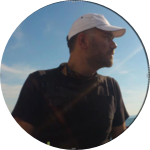About This Project
Genetic diversity is associated with health (or ‘fitness’), for example affecting an individual’s’ ability to fight pathogens. This relationship is important for wildlife populations; as their population sizes decline, genetic diversity is reduced and the consequent loss of fitness confounds effective conservation. Here we will investigate this relationship in striped dolphin populations in the Mediterranean Sea, where pathogens have led to mass die-offs of this species in recent years.
Ask the Scientists
Join The DiscussionWhat is the context of this research?
Loss of genetic diversity can increase the risk of extinction, but the mechanisms are still not fully understood. There is an inverse relationship between genetic diversity and population size, so small, endangered populations loose diversity more quickly. Small populations have a greater risk of going to extinction from chance events, but there is also a relationship between diversity and fitness (called heterozygosity fitness correlations). One risk is from inbreeding depression (the combination of deleterious alleles when mating with related individuals). However it seems that heterozygosity itself can also be beneficial. This study will use quantitative data on pathogen load to test the relationship with diversity across the genome as well as at specific genomic regions.
What is the significance of this project?
It was possible to count individual parasites from the lungs and stomachs of 132 beach-cast striped dolphins. In particular, some dolphins were heavily infested with lungworm, a nematode that can block airways and create lesions associated with disease. These detailed parasite counts of organisms known to impact on dolphin health provide an unprecedented level of resolution to test the relationship between pathogen load and diversity across the dolphin genome. A better understanding of this relationship will promote more effective conservation strategies through the more precise quantification of the risks associated with population decline (and the consequent loss of diversity)
What are the goals of the project?
A genome sampling method will be used to identify 5,000-10,000 variable genetic markers in every dolphin that has been assessed for parasite load (about half males and females). This will permit a precise assessment of the relationship between diversity and infection rate at multiple hierarchical genomic levels, and a chance to test early indications that the relationship may differ between males and females. Information learned will promote conservation of both dolphins and other mammalian populations
Budget
The funds will help us to assess high-throuput genome-wide sequences of 132 striped dolphin individuals. Lab routines will be
a) DNA extraction
b) Genome-libraries preparations
c) Quality controls
d) Next Generation Sequencing. Two ‘lanes’ of sequencing, each of which generates millions of sequence reads, sufficient for the analysis of 66 individual dolphins. Each lane costs $2475, total = $4950
This work will be done using the fully- equipped, state- of- the- art facilities in the Department of Biological and Biomedical Sciences at Durham University.
Funds are requested for DNA extraction and library construction ($5/ sample), Quality control ($3/ sample) and next generation sequencing ($37.5/ sample) for 132 samples. 8% platform fee; Total = $6,486
Endorsed by
Meet the Team
Team Bio
Our focus is on evolutionary process and genetic structure in natural populations. We use high-resolution genome sequencing to better understand the mechanisms that underlie the evolution of population structure, population dynamics, local adaptation and the relationship between genetic diversity and fitness in order to promote more effective conservation strategies.
Dr. Georgios A. Gkafas
I am a molecular ecologist who study genetic diversity of natural populations in the context of population structure, fitness correlations and phylogenetics. I use molecular approached, employing the methods of evolutionary biology as tools to better understanding the origin and evolution of biodiversity within and among populations, as well as the role of individual behaviour in these processes. My research interests focus on population dynamics on marine organism with an emphasis on delphinidae species.
Prof. A. Rus Hoelzel
Prof. Hoelzel is an evolutionary biologist and molecular ecologist with 35 years experience, including several decades working with marine mammal populations. He has published on these subjects extensively, leads the Molecular Ecology Group at Durham University, and supervised the initial work on this project. He has considerable experience with next generation sequencing methods, and a large research group actively engaged in related projects.
Prof. Juan Antonio Raga
Prof. Raga is director of the Science Park at the University of Valencia and author of over 200 scientific publications. He has studied the impact of pathogens on marine species, and especially on marine mammals for 35 years. He is a recognised world expert on this subject, and has been essential towards the facilitation of this study.
Additional Information
Allele – A variant of a given gene.
Heterozygosity – the state of having two different alleles at the same locus.
Fitness – A behavioural, physiological or morphological characteristic associated with an increased ability to pass on that individual’s genotype.
Heterozygosity-fitness correlations (HFC) – The relationship between heterozygosity and fitness that may be due to the single gene being investigated (a direct effect), to a gene nearby in the genome (a local effect), or to the diversity of the genome overall (a general effect).
D. Spielman , B.W. Brook , R. Frankham (2004) Most species are not driven to extinction before genetic factors impact them PNAS 101, 15261-15264
Project Backers
- 12Backers
- 8%Funded
- $482Total Donations
- $40.17Average Donation




